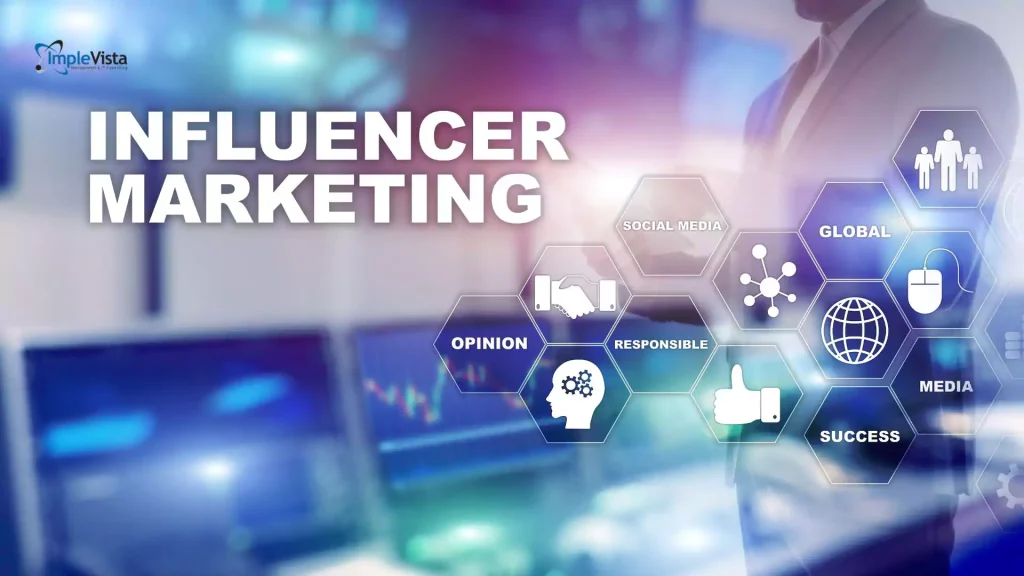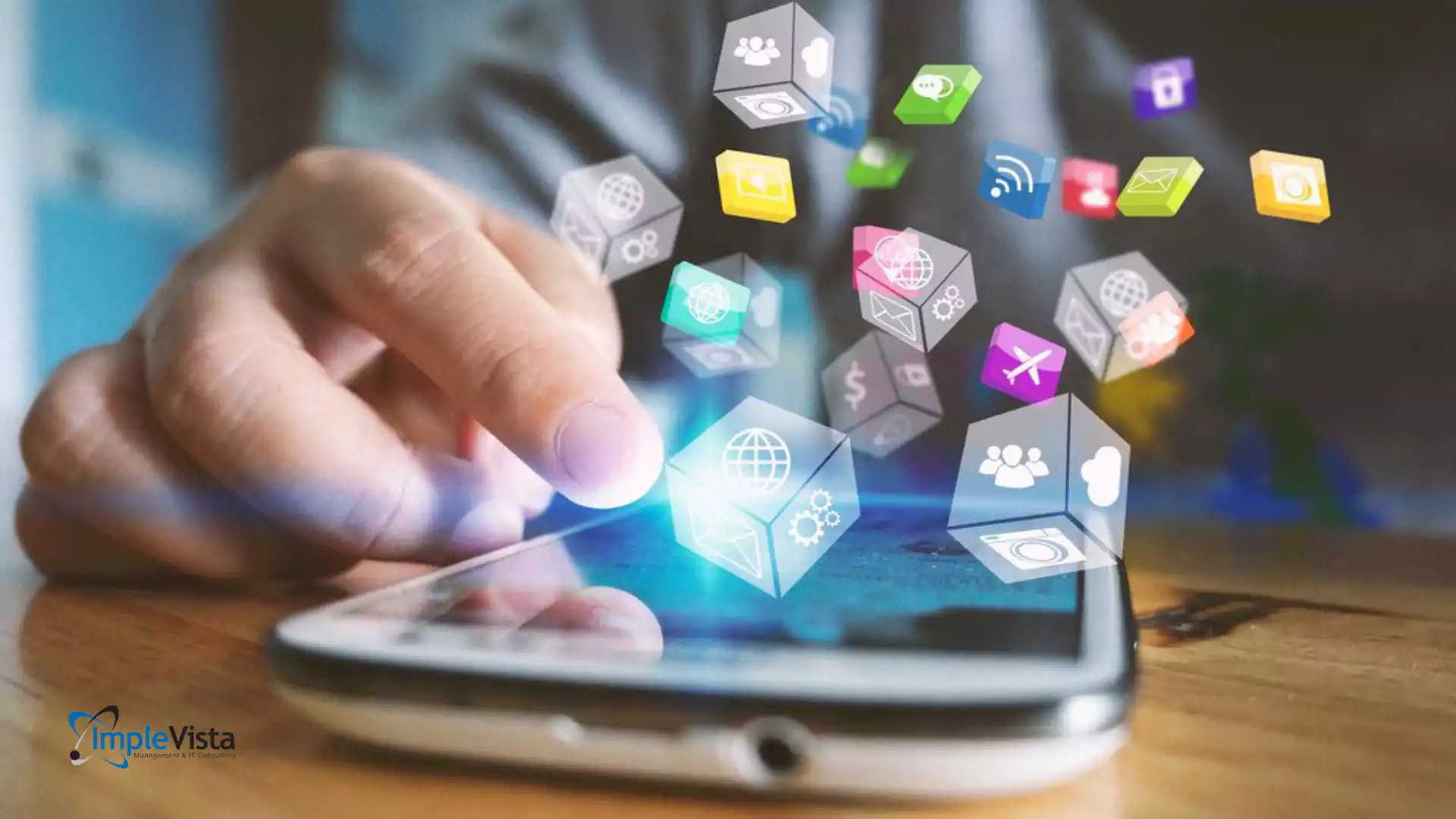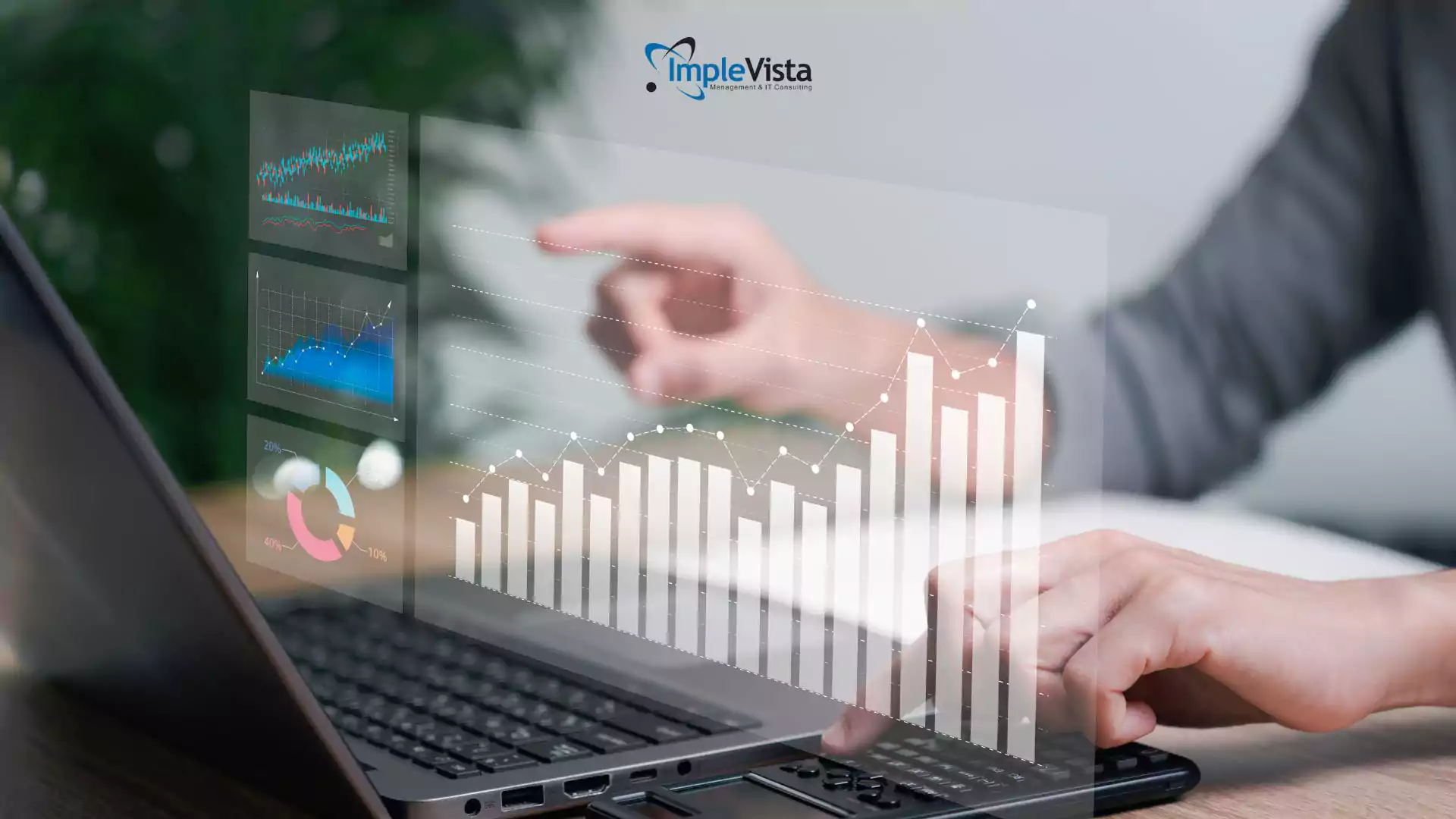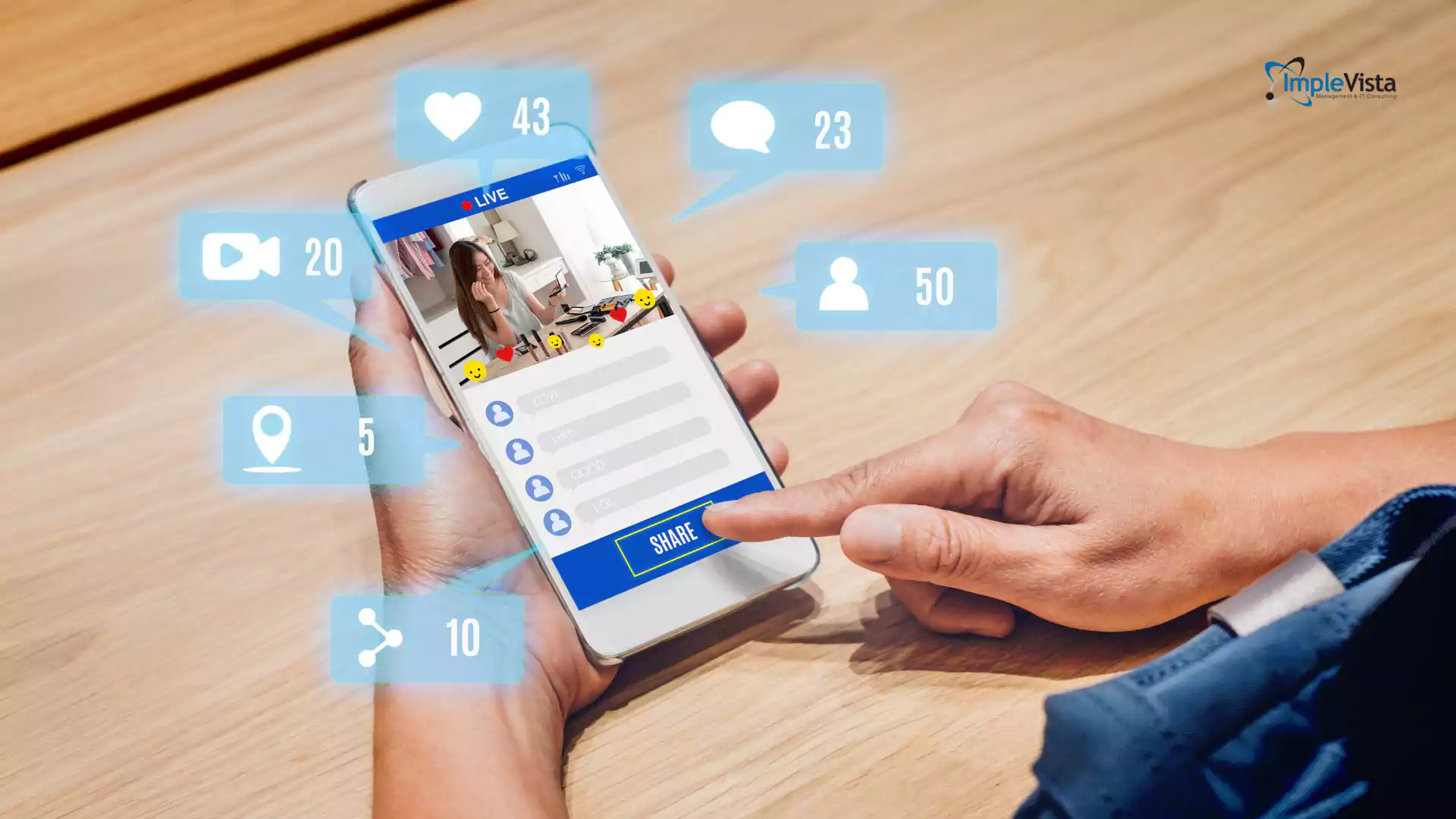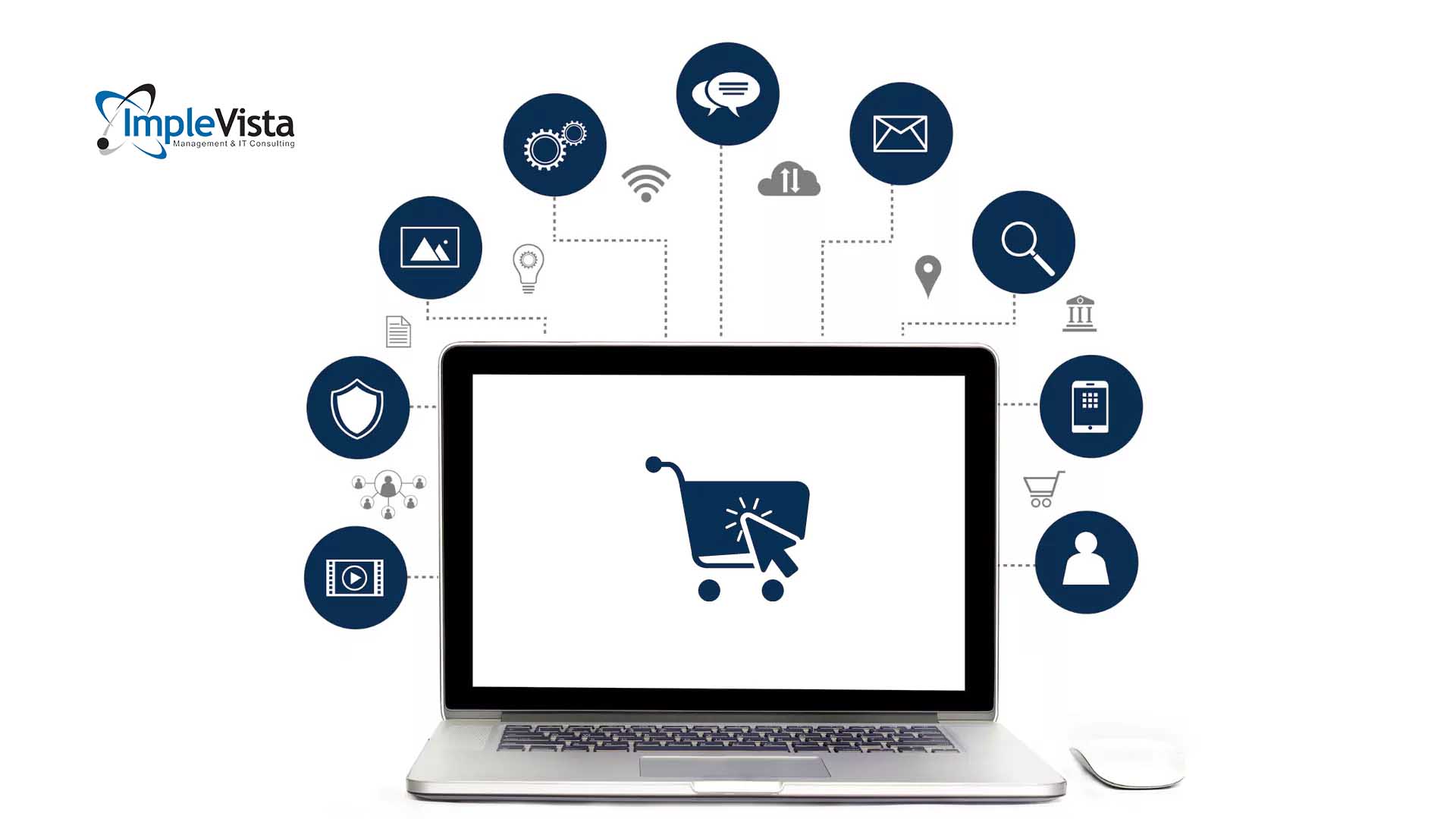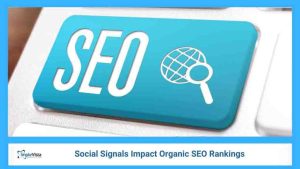Influencer marketing is becoming an essential strategy for brands in Bangladesh, where businesses are finding new ways to reach and engage with their target audience. Influencers have carved out unique roles within the digital ecosystem, from creating viral content on platforms like Facebook, Instagram, and YouTube to hosting live sessions and collaborating with brands. This article delves into the influencer marketing landscape in Bangladesh, examining recent trends, exploring why influencer partnerships work, and offering insights into how businesses can select and work effectively with local influencers.
The Growth of Influencer Marketing in Bangladesh
In recent years, Bangladesh has experienced a rapid increase in digital penetration, leading to a thriving online culture where social media platforms play a central role in connecting people and communities. With nearly 40 million internet users, a sizable portion of the population is highly active on social media, creating an opportunity for brands to leverage influencer marketing. Influencers in Bangladesh have amassed dedicated followers across diverse niches such as fashion, technology, lifestyle, travel, food, and fitness, making it easier for brands to target specific demographics and interests.
Key Factors Driving Influencer Marketing Growth in Bangladesh
- Increased Internet Access: High internet usage has broadened the influencer audience, creating an open market for brands to leverage.
- High Engagement on Social Media: Platforms like Facebook and Instagram see high user engagement, and influencers are key figures in directing consumer attention and trust.
- Shift to Mobile Consumption: Most Bangladeshi internet users access social media through mobile devices, allowing influencers to reach audiences anywhere and anytime.
- Youth Engagement: The country has a young, internet-savvy population that follows trends, making them more likely to trust and engage with influencers.
Types of Influencer Marketing in Bangladesh
Influencers in Bangladesh vary widely in their following, content style, and platform preferences. Understanding these types can help businesses determine which influencer is best suited for their marketing objectives.
Influencer marketing comes in several types, each tailored to different goals, audiences, and levels of influence. Here are the main types of influencer marketing:
1. Mega-Influencer Marketing
- Description: Mega-influencers are typically celebrities or internet personalities with millions of followers. Their reach is vast, spanning across international audiences.
- Best For: Large brands with significant budgets looking for high visibility.
- Example: A global brand collaborating with a famous celebrity to promote a new product worldwide.
2. Macro-Influencer Marketing
- Description: Macro-influencers have followers in the range of 100,000 to 1 million. They have broad appeal but are less “celebrity” than mega-influencers, often growing their following through consistent, niche-specific content.
- Best For: Brands seeking substantial reach without the high cost of mega-influencers, often for nationwide campaigns.
- Example: A fitness brand partnering with a well-known fitness influencer to reach health-conscious audiences.
3. Micro-Influencer Marketing
- Description: Micro-influencers typically have between 10,000 and 100,000 followers and often specialize in specific niches, such as travel, beauty, or technology. Their audiences are usually highly engaged and trust their recommendations.
- Best For: Brands aiming to build strong connections with specific audience segments at a reasonable cost.
- Example: A skincare brand collaborating with a beauty influencer who regularly shares skincare tips and has a loyal, engaged following.
4. Nano-Influencer Marketing
- Description: Nano-influencers have fewer than 10,000 followers, often including close friends, family, and local communities. They offer highly personal connections and a high level of trust with their followers.
- Best For: Small brands or local businesses seeking authentic, grassroots-level promotion.
- Example: A local café working with neighborhood influencers to promote a new menu item within a specific community.
5. Celebrity Influencer Marketing
- Description: Celebrity influencer marketing involves traditional celebrities who may not be digital natives. These campaigns use well-known public figures from music, film, or sports.
- Best For: Big brands looking for mainstream visibility and willing to invest in high-budget campaigns.
- Example: A clothing brand hiring a movie star to endorse a new fashion line on TV and social media.
6. Affiliate Influencer Marketing
- Description: In affiliate marketing, influencers promote a product or service and earn a commission on each sale or lead generated through their unique referral links or codes.
- Best For: Brands seeking measurable ROI, as each sale or lead is directly trackable.
- Example: A fitness influencer sharing an affiliate link for workout gear, earning a commission each time a follower purchases using the link.
7. Ambassador Programs
- Description: Brand ambassador programs involve long-term partnerships where influencers continuously represent a brand over an extended period. This relationship often includes multiple posts, events, or product launches.
- Best For: Brands looking to build strong, consistent brand loyalty and ongoing customer engagement.
- Example: A technology company partnering with a tech YouTuber as a brand ambassador to create content for new product launches.
8. Sponsored Content
- Description: In this type, influencers create specific content to promote a brand, such as a single post, video, or story. These posts are usually labeled as “sponsored” or “ad” to maintain transparency.
- Best For: Brands aiming for immediate exposure and engagement through a specific campaign or product launch.
- Example: A fashion influencer posting an Instagram photo wearing a sponsored outfit from a new brand collection.
9. Contests and Giveaways
- Description: Influencers host contests or giveaways to encourage audience engagement and promote a brand’s product. Followers typically enter by liking, commenting, or sharing the content.
- Best For: Brands looking to increase follower count, brand awareness, and engagement through interactive promotions.
- Example: A beauty brand teaming up with an influencer for a giveaway of skincare products, where followers must tag friends to enter.
10. Takeover Campaigns
- Description: In a takeover campaign, an influencer temporarily takes control of a brand’s social media account to engage directly with the brand’s audience. This allows for unique, fresh content and personal engagement.
- Best For: Brands wanting to give followers an exclusive, inside look or interactive experience through influencer content.
- Example: A travel brand inviting a travel influencer to “take over” their Instagram account for a day, sharing live updates from a travel destination.
11. Event Coverage
- Description: Brands partner with influencers to attend and cover events, product launches, or brand-hosted gatherings. Influencers share live updates, photos, and videos with their followers, creating real-time engagement.
- Best For: Brands looking to generate buzz around events or product launches.
- Example: A tech brand inviting a group of influencers to a new product launch event to share first-hand experiences with their followers.
12. Unboxing and Product Review
- Description: Influencers receive a product to unbox and review, providing honest feedback to their audience. This type of content is especially popular in tech, beauty, and lifestyle.
- Best For: Brands aiming to build credibility and showcase product features through authentic influencer experiences.
- Example: A beauty influencer sharing an unboxing and review of a new skincare line, explaining the benefits and features to their followers.
Each type of influencer marketing offers unique benefits, and brands can choose a combination of these approaches to create a well-rounded strategy that aligns with their goals, target audience, and budget.
Current Trends in Influencer Marketing in Bangladesh
1. Rise of Video Content and Reels
Influencers in Bangladesh are increasingly turning to short-form video content, especially Instagram Reels and YouTube Shorts. This format is popular because it is engaging, shareable, and provides high reach and engagement. Businesses can work with influencers to create entertaining and informative video content, maximizing visibility on platforms that prioritize video content.
2. Local Language and Cultural Content
The Bangladeshi audience resonates strongly with content in Bangla and content that reflects local culture. Influencers are creating more content that celebrates local heritage, traditional clothing, and local products. Brands that emphasize cultural relevance are seeing success, and businesses looking to enter the Bangladeshi market should align their messaging with local customs and values.
3. Live Sessions and Interactive Campaigns
Influencers are increasingly using live sessions on Facebook, Instagram, and YouTube to engage audiences in real time. These sessions often include product demonstrations, Q&A sessions, and giveaways, creating immediate interaction and excitement among followers.
4. Influencer-Led Brand Launches
Brands are now collaborating with influencers to promote new product launches or services, using influencer reach to create buzz around launches. This trend helps build initial traction and gives potential customers an authentic preview of the brand’s offerings.
5. Cause-Driven Influencer Marketing
Many Bangladeshi influencers are passionate about social causes, from environmental issues to women’s empowerment. Brands are recognizing the importance of supporting relevant causes through influencer collaborations, fostering positive public sentiment.
How to Select and Work with Influencers in Bangladesh
Choosing the right influencer for your brand requires a careful understanding of your target audience, campaign objectives, and budget. Here are steps to guide businesses in selecting and collaborating with influencers.
Step 1: Identify Your Campaign Goals
Define clear objectives for your influencer marketing campaign. Are you looking to increase brand awareness, drive website traffic, boost sales, or engage your audience? Your goals will shape your influencer selection process.
Step 2: Research Potential Influencers
Explore different influencers by niche, reach, engagement rate, and relevance to your brand. Check their follower demographics to ensure alignment with your target audience. Influencer marketing agencies in Bangladesh can help identify and vet influencers to find the best fit.
Step 3: Evaluate Influencer Engagement
Look beyond follower count to assess an influencer’s engagement metrics, such as likes, comments, and shares. A high engagement rate often signifies that followers are genuinely interested in the influencer’s content.
Step 4: Negotiate and Formalize Agreements
Create a formal agreement that outlines the campaign goals, timelines, content expectations, and compensation details. This clarity will help ensure that both parties are on the same page and that the influencer delivers as expected.
Step 5: Foster Authenticity and Creative Freedom
While it is important to guide influencers on the campaign’s message, allow them creative freedom to present your brand in a way that resonates with their audience. Authenticity is key to influencer marketing success, as audiences can quickly detect forced or insincere promotions.
Step 6: Monitor and Measure Campaign Success
Track key metrics such as reach, engagement, website traffic, and conversions to measure the success of the campaign. These insights can help refine future influencer marketing strategies.
Best Practices for Influencer Marketing Success
- Leverage Multiple Platforms: Work with influencers across multiple platforms to maximize your reach. Many Bangladeshi influencers are active on Facebook, Instagram, and YouTube.
- Focus on Long-Term Partnerships: Building long-term relationships with influencers can enhance brand loyalty and create consistency in messaging.
- Use Micro and Nano Influencers for Local Engagement: For regional campaigns, micro and nano influencers often provide a cost-effective and highly engaged audience.
- Incorporate Hashtags and Geotags: Geotags and popular hashtags related to Bangladesh can help enhance visibility among local audiences.
- Analyze Competitors: Understanding what your competitors are doing with influencers can help you identify gaps or opportunities to differentiate your brand.
Common Challenges in Influencer Marketing in Bangladesh
While influencer marketing holds immense potential, brands may face challenges such as fake followers, high competition for top influencers, and the need for continuous adaptation to changing algorithms and content trends. By staying updated on trends and leveraging the expertise of influencer marketing agencies, brands can overcome these hurdles.
Benefits of Influencer Marketing
Influencer marketing has become one of the most powerful tools for businesses to connect with audiences in a personal and engaging way. Here are some key benefits of influencer marketing:
1. Increased Brand Awareness
- Influencers have established audiences that trust them, so when they promote a brand, it instantly reaches more people. This exposure helps build awareness and boosts the brand’s visibility to a large, diverse audience that might not have been reached otherwise.
2. Enhanced Credibility and Trust
- Influencers are often viewed as experts or trusted sources within their niche. When they endorse a product or service, their followers see it as a personal recommendation. This trust factor is invaluable, as people are more likely to consider trying a product that comes highly recommended by someone they admire.
3. Access to Targeted Audiences
- Influencers cater to specific niches—whether it’s beauty, fitness, tech, or travel. Brands can collaborate with influencers who align with their target audience, allowing for highly targeted campaigns that reach the right people based on interests, demographics, and behavior.
4. Improved Engagement Rates
- Influencers are skilled at creating engaging content that resonates with their followers. Their posts often receive higher levels of interaction, including likes, shares, and comments. This engagement helps brands connect more deeply with audiences and can lead to higher brand recall and loyalty.
5. Cost-Effective Marketing
- Compared to traditional advertising, influencer marketing can be more affordable, especially when working with micro or nano-influencers. These influencers often offer high engagement rates at a fraction of the cost, providing a better return on investment (ROI) for brands with smaller budgets.
6. Boosted Conversions and Sales
- Influencers’ recommendations can have a direct impact on purchasing decisions. Influencers often use personalized discount codes, affiliate links, or product reviews, making it easier for their followers to convert into customers. Their endorsement often speeds up the buyer journey, leading to increased sales.
7. Enhanced SEO and Online Presence
- When influencers link to a brand’s website or mention it on social media, it can improve the brand’s SEO through increased backlinks and social signals. This boost helps drive more organic traffic to the brand’s website, improving visibility in search engine rankings.
8. Creative and Diverse Content Creation
- Influencers are experts in content creation and can produce unique, high-quality content tailored to their audience. This content can be repurposed across the brand’s own channels, saving time and resources on content creation while also adding a fresh, authentic perspective to the brand’s messaging.
9. Increased Brand Loyalty and Community Building
- Influencers help foster a community around a brand by creating genuine connections with their audience. By continuously engaging with followers, influencers create a sense of loyalty and community, which translates to brand loyalty as followers feel a personal connection to the brand.
10. Opportunity for Long-Term Partnerships
- Building long-term relationships with influencers can strengthen brand identity and credibility over time. With ongoing partnerships, influencers can become brand advocates who promote the brand consistently, deepening trust and familiarity among their audience.
11. Real-Time Feedback and Market Insights
- Influencer marketing provides brands with instant feedback on products or campaigns. Followers often share their opinions in comments, and influencers relay their audience’s reactions, allowing brands to gather market insights and adjust their strategies accordingly.
12. Increased Social Proof
- Social proof, the concept that people follow the actions of others, is powerful in digital marketing. When audiences see their favorite influencer using a product, it reinforces the product’s value and popularity, making potential customers more likely to buy it.
13. Effective for Launching New Products
- Influencers can help create buzz around a product launch by sharing early reviews, unboxing videos, or exclusive insights. Their influence can drive immediate interest and curiosity, making product launches more successful by reaching engaged and interested audiences.
14. Flexible and Scalable Marketing Channel
- Influencer marketing is highly adaptable and scalable. Brands can work with a single influencer for a small campaign or collaborate with multiple influencers across platforms for larger initiatives. This flexibility allows brands to adjust their strategies based on their goals, audience, and budget.
15. Measurable Results and ROI
- Influencer marketing campaigns can be tracked using performance metrics such as engagement rates, reach, conversions, and sales, providing clear insights into ROI. Brands can see exactly how an influencer campaign impacts their goals and use these insights to optimize future campaigns.
In summary, influencer marketing offers brands a powerful way to connect with audiences, build credibility, increase conversions, and enhance online presence, all while remaining cost-effective and adaptable. It’s a versatile strategy that, when used effectively, can drive significant growth and brand loyalty.
Social Media Influencer Marketing
Social media influencer marketing is a powerful strategy that involves partnering with influencers—people with a large following and significant influence on social media platforms—to promote products, services, or brand messages. By leveraging the established trust and credibility influencers have with their followers, brands can effectively increase their visibility, engage with target audiences, and drive conversions.
Here’s a deeper look into social media influencer marketing:
1. Why Social Media Influencer Marketing Works
- Trust and Authenticity: Influencers have built genuine relationships with their followers by sharing content that resonates with them. This trust translates to their recommendations, making followers more likely to consider purchasing from brands that influencers endorse.
- Targeted Reach: Social media influencers often cater to specific niches or demographics, such as fitness, beauty, travel, or technology. Brands can reach these focused audiences by collaborating with influencers who align with their target market.
- High Engagement: Content from influencers generally garners more engagement than traditional advertising. Followers are often more likely to interact with, share, and respond to posts created by influencers.
2. Types of Social Media Influencers
- Mega-Influencers: Celebrities and influencers with millions of followers. They offer massive reach but come with a higher cost.
- Macro-Influencers: Those with around 100,000 to 1 million followers, often experts in a specific field.
- Micro-Influencers: Influencers with 10,000 to 100,000 followers, known for highly engaged and niche audiences.
- Nano-Influencers: Individuals with fewer than 10,000 followers, often having a personal connection with their audience and a high level of trust.
3. Popular Platforms for Influencer Marketing
- Instagram: Known for its visual appeal, Instagram is ideal for influencers sharing lifestyle, fashion, and beauty content. Instagram Stories and Reels also allow for creative and interactive content formats.
- YouTube: Influencers on YouTube create long-form videos, such as tutorials, product reviews, and vlogs. YouTube is particularly popular for tech and beauty influencer marketing.
- TikTok: With its focus on short-form, engaging videos, TikTok has become a hub for influencer marketing. It’s especially popular for reaching younger audiences with viral challenges and creative content.
- Facebook: Although not as popular with newer influencers, Facebook still allows influencer collaborations, especially with established brands and communities.
- Twitter: While Twitter is less visual, influencers here can drive conversations and share insights on trending topics, making it a useful platform for opinion leaders and niche experts.
4. Benefits of Social Media Influencer Marketing
- Enhanced Brand Awareness: Partnering with influencers helps brands increase visibility and reach large or niche audiences on social media.
- Improved Credibility: When influencers recommend products, it serves as a trusted endorsement, boosting brand credibility.
- Higher Engagement Rates: Influencers create content that resonates with their followers, leading to better engagement and interaction compared to traditional ads.
- Cost-Effective Advertising: Influencer marketing, especially with micro and nano-influencers, often costs less than traditional ads and yields a higher return on investment (ROI).
- Faster Conversions: Since followers trust influencers, their endorsements can shorten the buyer journey, leading to quicker purchasing decisions.
5. Key Strategies for Social Media Influencer Marketing
- Set Clear Goals: Define what you want to achieve, whether it’s brand awareness, lead generation, sales, or follower growth.
- Choose the Right Influencers: Select influencers based on their audience demographics, engagement rates, niche relevance, and alignment with brand values.
- Provide Creative Freedom: Influencers know their audience best, so giving them the creative freedom to promote your brand authentically often leads to better engagement.
- Use Discount Codes and Affiliate Links: These are trackable and incentivize followers to make purchases, helping brands measure campaign performance.
- Leverage User-Generated Content (UGC): Repurposing influencer content across your own channels can increase reach and reinforce your brand message.
- Monitor and Measure Results: Track engagement, reach, conversions, and ROI to understand the effectiveness of the campaign and make adjustments as needed.
6. Trends in Social Media Influencer Marketing
- Rise of Micro and Nano-Influencers: These influencers often have higher engagement rates and are more affordable, making them ideal for niche campaigns.
- Authenticity Over Perfection: Audiences now prefer raw and authentic content over polished and staged posts, leading influencers to share more genuine moments.
- Video and Live Content: Video formats like Instagram Reels, TikTok videos, and YouTube vlogs are increasingly popular, as they are engaging and showcase products effectively.
- Influencer Takeovers: Brands invite influencers to “take over” their social media accounts for a day, giving audiences a unique, insider view.
- Long-Term Partnerships: Brands are focusing on building ongoing relationships with influencers instead of one-off posts to maintain consistent messaging and build stronger brand loyalty.
7. Challenges in Social Media Influencer Marketing
- Finding the Right Influencers: Identifying influencers with the right audience and engagement level can be challenging.
- Measuring ROI: Tracking the direct impact of influencer campaigns on sales and engagement requires careful analysis and sometimes specialized tools.
- Transparency and Compliance: Ensuring that influencers disclose paid partnerships to maintain transparency is crucial, as failure to do so can harm brand credibility.
- Managing Authenticity: Influencer marketing’s success hinges on authenticity, so forced or overly promotional content may lead to negative reactions from followers.
8. Best Practices for Social Media Influencer Marketing
- Build Genuine Relationships: Establish meaningful connections with influencers to foster long-term collaborations.
- Focus on Engagement Over Follower Count: Influencer success is best measured by engagement rate rather than follower numbers.
- Tailor Content for Each Platform: Different social media platforms require unique approaches and content styles.
- Optimize for Mobile Users: Ensure that the influencer’s content is optimized for mobile viewing, as the majority of social media users access platforms on mobile devices.
- Stay Updated on Trends: Social media evolves quickly, so staying informed on new trends, features, and content types is key to successful influencer marketing.
Social media influencer marketing continues to evolve, offering brands new and creative ways to connect with audiences through trusted voices. By developing targeted strategies and focusing on authenticity, brands can leverage influencers to grow their presence, engage with their audience, and drive meaningful results.
How does digital marketing support influencer marketing in Bangladesh?
Digital marketing plays a crucial role in supporting and amplifying influencer marketing in Bangladesh by providing the tools, strategies, and data needed to make influencer campaigns more effective and measurable. Here’s how digital marketing enhances influencer marketing:
1. Enhanced Reach and Targeting
- Through digital marketing platforms like Facebook, Instagram, and YouTube, influencers can reach highly specific demographics and interests, allowing brands to connect with their ideal audience. Paid advertising tools on these platforms enable brands to target content to audiences based on age, location, and interests, making influencer collaborations more impactful.
2. Data-Driven Insights
- Digital marketing relies heavily on data analytics, which supports influencer marketing by offering insights into audience behavior, engagement patterns, and campaign performance. Using tools like Google Analytics, brands can track key metrics such as website traffic, click-through rates, and conversions generated from influencer campaigns, helping to refine strategies for maximum ROI.
3. Content Amplification
- Digital marketing tactics, like boosted posts and paid ads, amplify influencer content to reach broader or more targeted audiences. For example, brands can partner with influencers to create content and then boost those posts, allowing them to reach people beyond the influencer’s organic followers and drive greater engagement.
4. Cross-Platform Strategies
- Influencer marketing is often enhanced through digital marketing across multiple platforms, ensuring content reaches audiences on different channels. For example, an influencer’s campaign on Instagram can be shared on Facebook or linked through YouTube, expanding the campaign’s reach and visibility.
5. Tracking and Attribution
- Digital marketing helps measure the impact of influencer campaigns more accurately. With tools like unique URLs, UTM tracking codes, and QR codes, brands can track specific actions taken by the audience through influencer links, enabling a clear view of each influencer’s contribution to the campaign’s success.
6. Building Long-Term Brand Relationships
- Through digital platforms, brands can track influencer content engagement over time and foster continuous relationships. Consistent interactions, such as sharing influencer posts on brand pages and tagging influencers in brand updates, strengthen partnerships and keep the brand present within the influencer’s community.
7. Utilizing Influencer Content in Digital Ads
- Influencer-created content often resonates better with audiences because it feels authentic. Brands can repurpose this content in digital advertising, creating an authentic marketing campaign that speaks to potential customers using trusted influencer voices.
8. Enhanced Engagement through Interactive Features
- Digital marketing allows brands to integrate interactive features, such as polls, Q&A sessions, and quizzes, into influencer campaigns. This engages followers more actively, creating a community around the brand and fostering loyalty.
9. Real-Time Campaign Adjustments
- Digital marketing enables brands to monitor influencer campaigns in real time and make immediate adjustments to improve performance. For instance, if a specific type of content or platform generates higher engagement, brands can adapt to optimize results.
10. Aligning Content with SEO and Local Keywords
- By aligning influencer content with digital marketing SEO strategies, brands can increase visibility in local search results. In Bangladesh, this means using relevant Bangla keywords, regional hashtags, and geotags to attract a more localized audience.
Digital marketing, therefore, supports influencer marketing in Bangladesh by amplifying reach, refining targeting, and providing data that ensures each campaign’s effectiveness, making it an indispensable component of influencer partnerships.
How can Digital ImpleVista Help influence marketing in Bangladesh?
Digital ImpleVista can significantly enhance influencer marketing for brands in Bangladesh by offering comprehensive support tailored to the local market. Here’s how Digital ImpleVista can help:
1. Connecting Brands with the Right Influencers
- Digital ImpleVista has in-depth knowledge of the Bangladeshi influencer landscape and can help brands connect with influencers who align with their goals, audience, and values. By identifying influencers based on their niche, reach, engagement, and authenticity, they ensure brand campaigns resonate with the right audience.
2. Designing Effective Influencer Marketing Strategies
- Digital ImpleVista uses data-driven strategies to build campaigns that maximize engagement and brand visibility. They help brands establish clear goals, from increasing awareness to boosting sales, and create influencer plans that match these objectives.
3. Leveraging Local Expertise for Cultural Relevance
- Being a local agency, Digital ImpleVista understands Bangladeshi culture and audience preferences. They guide influencers to create content that resonates locally, such as using Bangla language, incorporating cultural elements, and aligning with Bangladeshi trends, making campaigns more relatable and impactful.
4. Enhancing Reach with Paid Promotions
- Digital ImpleVista can amplify influencer content using paid advertising across platforms like Facebook, Instagram, and YouTube. By boosting influencer posts, they increase reach to a larger, more targeted audience, ensuring higher engagement and conversions.
5. Tracking and Measuring Campaign Performance
- Digital ImpleVista uses advanced analytics to track campaign results, including reach, engagement, website visits, and conversion rates. They provide brands with detailed insights, helping them understand ROI and adjust strategies based on real-time data.
6. Providing SEO and Local Search Optimization
- Digital ImpleVista integrates SEO and local keywords into influencer campaigns, enhancing visibility in search results and driving organic traffic. By using region-specific keywords, hashtags, and geotags, they help brands connect with audiences actively searching for related products or services in Bangladesh.
7. Managing Campaigns and Building Long-Term Relationships
- Digital ImpleVista handles campaign logistics, including influencer agreements, timelines, and content approvals. They also foster long-term relationships between brands and influencers, creating consistent messaging and transforming influencers into genuine brand advocates.
8. Offering Industry Insights and Local Market Trends
- Digital ImpleVista stays updated on Bangladesh’s influencer and digital marketing trends, such as the rise of short-form video or cause-related campaigns. This knowledge allows them to guide brands in creating content that resonates with the audience and stays competitive in a fast-evolving digital space.
9. Ensuring Compliance and Transparency
- Digital ImpleVista helps influencers follow disclosure and compliance guidelines to maintain transparency with audiences. This approach builds trust and ensures campaigns adhere to ethical standards, which strengthens brand reputation.
10. Supporting Influencer-Driven Brand Growth
- By combining digital marketing expertise with influencer strategy, Digital ImpleVista supports brand growth and visibility, making influencer marketing a powerful driver for long-term success in the Bangladeshi market.
Digital ImpleVista offers end-to-end influencer marketing solutions that help brands succeed in Bangladesh. By connecting with the right influencers, creating culturally relevant content, amplifying reach, and tracking performance, Digital ImpleVista maximizes the impact of influencer campaigns for Bangladeshi businesses.
Frequently Asked Questions (FAQs) on Influencer Marketing in Bangladesh
Q: What is influencer marketing, and why is it effective in Bangladesh?
A: Influencer marketing leverages individuals with a large social media following to promote brands. It’s effective in Bangladesh due to high social media engagement and the trust that followers place in influencers.
Q: How do I find the right influencer for my brand in Bangladesh?
A: Research influencers based on your niche, audience alignment, and engagement rates. Partnering with an influencer marketing agency in Bangladesh can also streamline this process.
Q: How much does influencer marketing cost in Bangladesh?
A: Costs vary based on influencer type, following, engagement rate, and content requirements. Nano and micro-influencers are more affordable, while mega-influencers may require higher budgets.
Q: Which social media platforms are popular for influencer marketing in Bangladesh?
A: Facebook, Instagram, and YouTube are the most popular platforms, with influencers frequently using these to engage audiences through posts, Reels, and live sessions.
Q: What are the benefits of working with an influencer marketing agency in Bangladesh?
A: Agencies can connect you with vetted influencers, manage campaigns, track results, and handle negotiations, saving you time and ensuring optimal results.
Q: How do I measure the success of an influencer marketing campaign?
A: Key performance indicators (KPIs) include reach, engagement rate, website traffic, and conversion rates. Tracking these metrics will help you gauge the campaign’s impact.
Q: What are the risks of influencer marketing?
A: Common risks include low engagement, follower fraud, or lack of alignment with brand values. Vet influencers carefully and outline clear expectations to minimize these risks.
Q: Can small businesses benefit from influencer marketing in Bangladesh?
A: Yes, small businesses can benefit greatly, especially by working with micro or nano-influencers who offer affordable engagement with niche communities.
Q: How can I make my influencer campaign successful?
A: Ensure alignment with influencer values, allow creative freedom, and prioritize authenticity to resonate with audiences. Plan thoroughly and track results to refine your approach.
Q: What are the latest trends in influencer marketing in Bangladesh?
A: Popular trends include the use of short-form videos, live sessions, cultural content, and cause-driven campaigns, which appeal to the Bangladeshi audience.
Influencer marketing offers tremendous potential for brands looking to expand their reach and connect authentically with audiences in Bangladesh. By understanding local trends and working closely with influencers who align with their brand values, businesses can craft impactful campaigns that drive engagement and foster loyalty among consumers.

